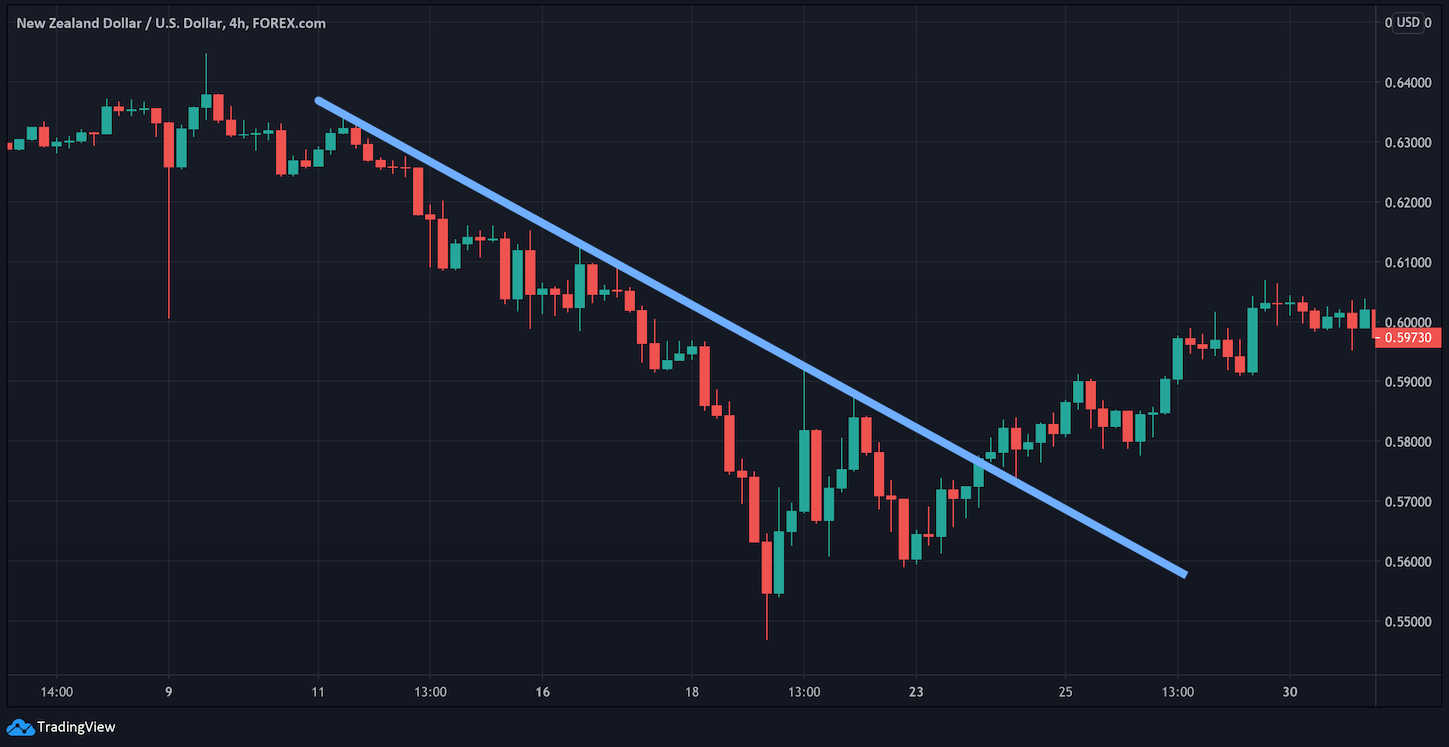What determines a trend line in Forex

Trend lines are regarded as essential tools in technical analysis within the Forex market, serving to identify market directions. They consist of straight lines drawn to indicate the overall trajectory of price movements, helping traders recognize trends effectively.
In an upward trend, trend lines intersect a series of successive lows, with each low being higher than the previous one. This pattern suggests that the price of the asset is increasing, denoting steady growth.
Conversely, in a downward trend, the line connects a sequence of highs, each one lower than the last. This reflects a decline in the asset’s price and indicates a consistent downward movement.
In a sideways trend, price movements occur within a narrow range without a clear upward or downward direction. In this case, trend lines run parallel, suggesting market consolidation.
The significance of a trend line increases if it touches the price multiple times. A trend line that has been touched three times or more is considered reliable. Trend lines drawn on longer time frames, such as daily or weekly charts, are generally viewed as more trustworthy compared to those on shorter time frames like hourly or minute charts.
Steep trend lines may indicate less reliability as they signify short-term, abrupt price changes that could be unsustainable. On the other hand, gentler trend lines are typically more stable and often indicate longer-term trends.
Overall, trend lines are a fundamental tool in Forex technical analysis that assist market participants in identifying trends. They help define support and resistance levels and aid in developing trading strategies. Properly constructed trend lines can significantly enhance trading outcomes by improving the accuracy of forecasts and mitigating risks.
Understanding how to draw and interpret trend lines effectively allows traders to make more informed decisions and execute trades with higher confidence. As part of a broader trading strategy, trend lines provide critical insights that can lead to improved performance in the Forex market. By combining trend analysis with other key indicators and market factors, traders can navigate the complexities of Forex trading and work toward achieving their financial objectives more successfully.